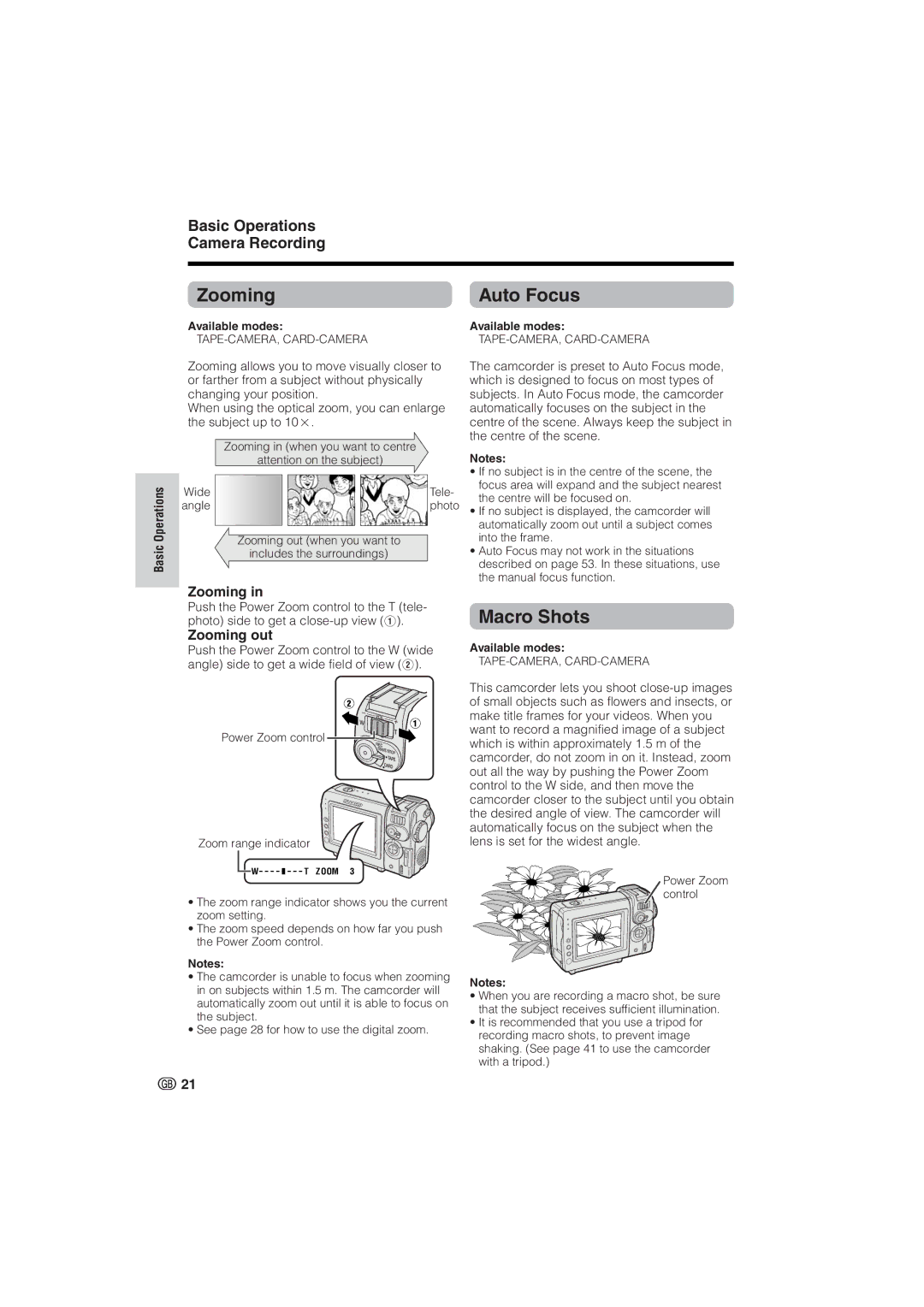
Basic Operations Camera Recording
Basic Operations
Zooming
Available modes:
Zooming allows you to move visually closer to or farther from a subject without physically changing your position.
When using the optical zoom, you can enlarge the subject up to 10K.
Zooming in (when you want to centre
attention on the subject)
Wide |
|
|
|
|
| Tele- |
angle |
|
|
|
|
| photo |
|
|
|
|
|
|
|
Zooming out (when you want to
includes the surroundings)
Zooming in
Push the Power Zoom control to the T (tele- photo) side to get a
Zooming out
Push the Power Zoom control to the W (wide angle) side to get a wide field of view (2).
Power Zoom control ![]()
![]()
Zoom range indicator
W | T Z OOM 3 |
•The zoom range indicator shows you the current zoom setting.
•The zoom speed depends on how far you push the Power Zoom control.
Notes:
•The camcorder is unable to focus when zooming in on subjects within 1.5 m. The camcorder will automatically zoom out until it is able to focus on the subject.
•See page 28 for how to use the digital zoom.
Auto Focus
Available modes:
The camcorder is preset to Auto Focus mode, which is designed to focus on most types of subjects. In Auto Focus mode, the camcorder automatically focuses on the subject in the centre of the scene. Always keep the subject in the centre of the scene.
Notes:
•If no subject is in the centre of the scene, the focus area will expand and the subject nearest the centre will be focused on.
•If no subject is displayed, the camcorder will automatically zoom out until a subject comes into the frame.
•Auto Focus may not work in the situations described on page 53. In these situations, use the manual focus function.
Macro Shots
Available modes:
This camcorder lets you shoot
Power Zoom control
Notes:
•When you are recording a macro shot, be sure that the subject receives sufficient illumination.
•It is recommended that you use a tripod for recording macro shots, to prevent image shaking. (See page 41 to use the camcorder with a tripod.)
![]() 21
21
